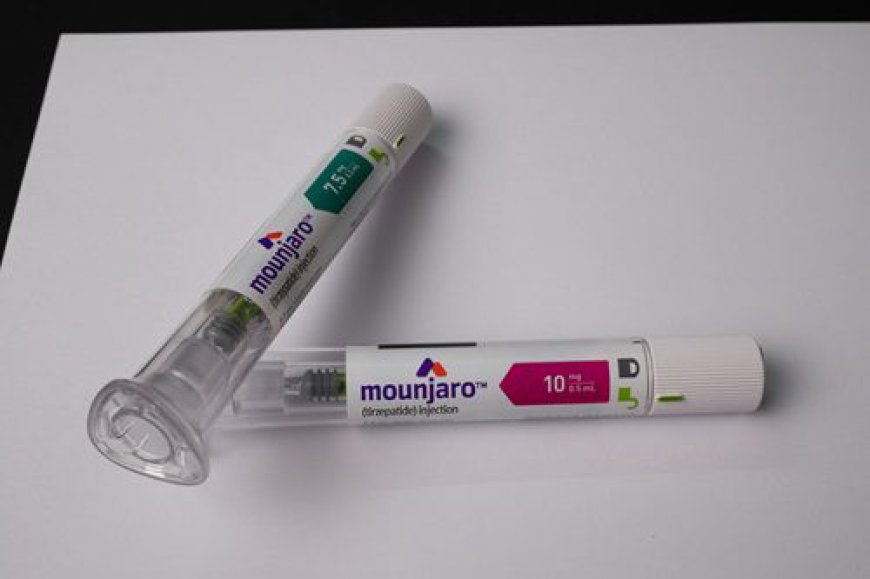Mounjaro Dosage: Finding the Right Amount

Mounjaro Injection Dubai the brand name for tirzepatide, is an innovative medication that has gained attention for its dual-action mechanism in treating type 2 diabetes. Approved by the U.S. Food and Drug Administration (FDA) in May 2022, it mimics the action of two hormones—glucose-dependent insulinotropic polypeptide (GIP) and glucagon-like peptide-1 (GLP-1). This unique mechanism helps improve glycemic control while also promoting weight loss. As with any medication, determining the appropriate dosage is critical to achieving optimal results while minimizing potential side effects.
Understanding Mounjaro
Mounjaro is administered via a subcutaneous injection, typically in the abdomen, thigh, or upper arm. It is available in multiple strengths, which allows healthcare providers to tailor the treatment to each patient's needs. Mounjaro's effectiveness in managing blood glucose levels and supporting weight loss has made it a popular choice among patients and healthcare professionals alike.
Starting Dosage
The typical starting dosage of Mounjaro for adults with type 2 diabetes is 2.5 mg once a week. This initial dose is intentionally low to help the body acclimate to the medication and to reduce the risk of gastrointestinal side effects, which are the most commonly reported. These side effects can include nausea, vomiting, diarrhea, and constipation, especially during the first few weeks of treatment.
Titration and Adjustments
After four weeks on the initial 2.5 mg dose, healthcare providers may recommend increasing the dosage to 5 mg once weekly if the patient's glycemic control is inadequate. The titration can continue, with potential increases to 7.5 mg, 10 mg, and up to a maximum of 15 mg per week, depending on the patient’s response and tolerability.
Dosing Schedule
Mounjaro is typically administered on the same day each week, allowing patients to develop a routine. If a dose is missed, patients should take it as soon as they remember, provided it is within four days of the scheduled dose. If more than four days have passed, they should skip the missed dose and resume the regular dosing schedule. It is important not to double the dose to make up for a missed injection.
Factors Influencing Dosage
Several factors may influence the appropriate dosage of Mounjaro for an individual. These factors include:
-
Body Weight: Heavier individuals may require higher doses to achieve optimal glycemic control and weight loss, while lighter individuals might achieve satisfactory results with lower doses.
-
Comorbidities: Patients with other health conditions, such as chronic kidney disease or liver dysfunction, may require adjusted dosages.
-
Tolerance: Some individuals may experience side effects at higher doses and may benefit from a slower titration or remaining on a lower dose.
-
Medication Interactions: It is essential for patients to inform their healthcare provider of all medications they are taking, as certain drugs may affect how Mounjaro is metabolized and utilized by the body.
Monitoring and Follow-Up
Once treatment with Mounjaro has begun, regular follow-up appointments with a healthcare provider are necessary to monitor the patient's response to the medication. This monitoring typically includes checking blood glucose levels, assessing weight loss progress, and evaluating any side effects. Adjustments to the dosage may be made based on these evaluations.
Efficacy and Side Effects
Clinical trials have demonstrated that Mounjaro is effective in significantly lowering hemoglobin A1c (a measure of long-term blood glucose control) and promoting weight loss compared to placebo. Many patients report feeling more satisfied after meals, leading to reduced calorie intake.
However, like any medication, Mounjaro is not without its potential side effects. The most common side effects include gastrointestinal issues, such as:
- Nausea
- Diarrhea
- Vomiting
- Constipation
- Stomach pain
In rare cases, patients may experience more severe side effects, including pancreatitis, kidney problems, or allergic reactions. It is essential for patients to communicate any concerning symptoms to their healthcare provider promptly.
Special Populations
For specific populations, such as the elderly or those with other underlying health conditions, healthcare providers may take extra precautions when prescribing Mounjaro. A careful assessment of benefits versus risks is necessary to ensure safe and effective treatment.
Conclusion
Finding the right dosage of Mounjaro is a critical component of managing type 2 diabetes effectively. Starting with a low dose and gradually increasing it allows for optimal glycemic control while minimizing side effects. Each patient’s journey with Mounjaro will be unique, influenced by factors such as body weight, tolerance, and any coexisting medical conditions.
Regular monitoring and open communication with healthcare providers are essential for ensuring that the chosen dosage meets the patient's needs effectively. With proper management, Mounjaro can be a powerful tool in the fight against type 2 diabetes, leading to improved health outcomes and quality of life.
Before starting any new medication, patients should have a thorough discussion with their healthcare provider to determine the best treatment plan tailored to their individual circumstances.
